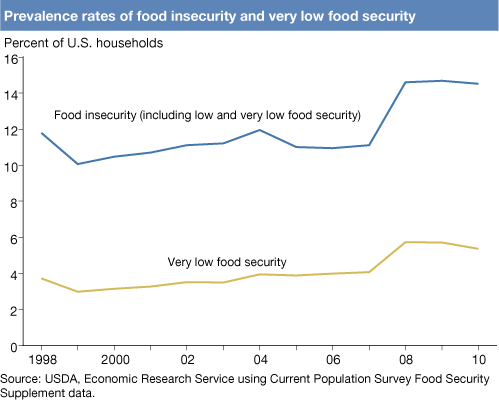In the Long Run: Prevalence of Food Insecurity Remained Essentially Unchanged in U.S. Households
- by Alisha Coleman-Jensen and Mark Nord
- 12/1/2011
After a sharp increase from 2007 to 2008, the prevalence of food insecurity remained essentially unchanged in 2009 and 2010 at 14.5 percent. Food-insecure households had difficulty at times during the year providing enough food for all their members due to a lack of resources. The prevalence of very low food security, the more severe range of food insecurity characterized by reduced food intake and disrupted eating patterns, declined from 5.7 percent in 2009 to 5.4 percent in 2010. In the 2001 recession, food insecurity rose and continued to increase through 2004, even though economic growth resumed in 2002.


